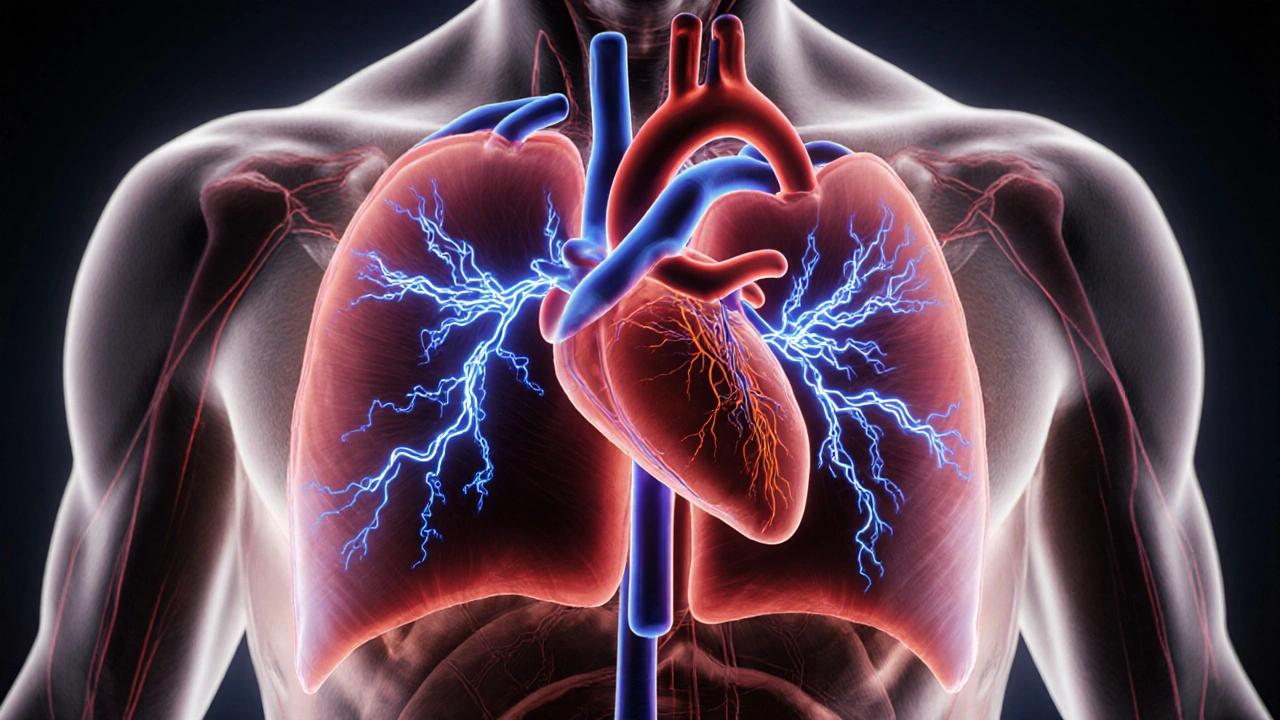Atrial Fibrillation – What You Need to Know
When dealing with Atrial Fibrillation, a common cardiac arrhythmia where the heart’s upper chambers beat rapidly and irregularly. Also known as AFib, it can lead to serious complications if left unmanaged. One of the biggest concerns is its link to Stroke, a sudden loss of brain function caused by disrupted blood flow. Managing Anticoagulants, medications that thin the blood to prevent clot formation is often essential to lower that risk. Meanwhile, Beta‑blockers, drugs that slow the heart rate and reduce blood pressure are frequently used to control symptoms. In short, atrial fibrillation encompasses irregular heart rhythm, requires anticoagulation therapy, and influences stroke risk.
Key Topics Covered
First, let’s look at the rhythm side. Atrial fibrillation can be classified as paroxysmal, persistent, or permanent, each describing how long the irregular beats last and whether they return to normal on their own. Understanding the type helps doctors decide between rhythm‑control strategies—like electrical cardioversion or anti‑arrhythmic drugs—and rate‑control approaches such as beta‑blockers or calcium channel blockers. The choice often hinges on patient age, symptom burden, and underlying heart disease.
Second, the clot‑prevention angle matters. The CHA₂DS₂‑VASc score tallies risk factors—age, hypertension, diabetes, prior stroke, and more—to predict how likely a clot will form. A higher score usually means an anticoagulant is recommended, whether it’s a warfarin with regular INR checks or a direct oral anticoagulant (DOAC) that needs less monitoring. Proper dosing, kidney function checks, and awareness of drug interactions are crucial to keep bleeding risks in check.
Third, lifestyle tweaks can make a real difference. Reducing alcohol, managing sleep apnea, staying active, and controlling weight all help lower the burden of atrial fibrillation. Even modest weight loss can improve heart size and rhythm stability, while regular exercise strengthens the heart and reduces blood pressure. Combining these habits with medical therapy creates a comprehensive plan that targets both the arrhythmia and its complications.
Finally, emerging tools are reshaping how we handle the condition. Wearable ECG monitors and smartphone apps now let patients spot irregular beats early, prompting quicker medical attention. Catheter ablation—where a tiny scar is created to block faulty signals—has become a go‑to option for many, especially those who don’t respond to drugs. As technology advances, the line between diagnosis and treatment continues to blur, offering patients more personalized care.
Below you’ll find a curated collection of articles that dive deeper into each of these areas, from medication comparisons to lifestyle guides, giving you practical insights to manage atrial fibrillation effectively.

How Dabigatran Is Changing Stroke Prevention for Atrial Fibrillation
Explore how dabigatran, a direct thrombin inhibitor, reshapes stroke prevention in atrial fibrillation with evidence, dosing tips, and patient‑focused guidance.
Read More
Understanding Atrial Fibrillation and How Cardiac Electrophysiologists Help
Learn what atrial fibrillation is, when to see a cardiac electrophysiologist, and the treatment options from meds to catheter ablation, with clear guidance on risks and lifestyle.
Read More




